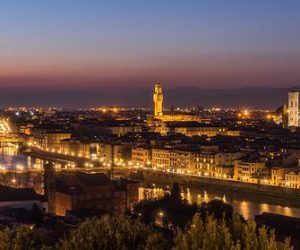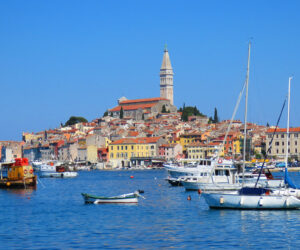UNESCO stands for United Nations Educational, Scientific and Cultural Organization and serves as a United Nations specialized agency. The World Heritage Site is a landmark recognized both by the UN and UNESCO and represents a site that is unique and has a cultural, historical, natural, and other significance.
At the moment, there are 1052 sites recognized, of which the most are located in Italy, followed by China, Spain, France, Germany, India, and Mexico. This article can read about ten UNESCO World Heritage Sites in Europe that definitely deserves to be on your bucket list. The old continent offers limitless opportunities and sites to be seen, so make sure to cross at least one of the list.
1. Jungfrau, Switzerland
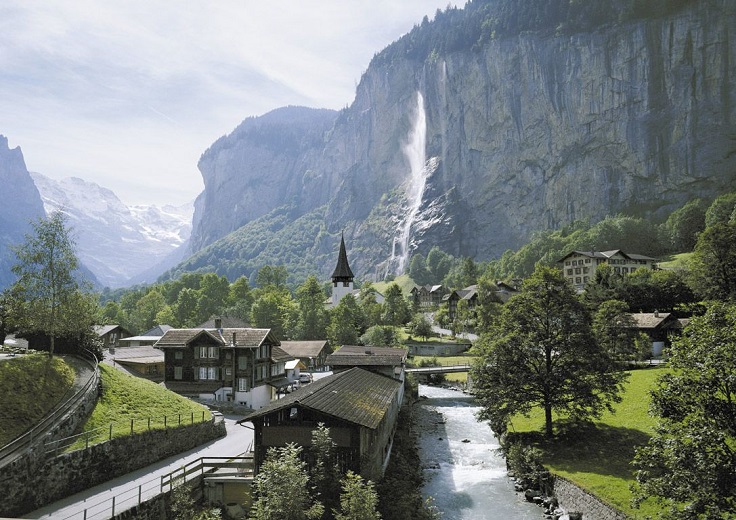
via splendorsofeurope.com
Jungfrau is one of Switzerland’s most visited destinations and is part of the Jungfrau – Aletsch area. It is the highest point in the area, with the Jungfrau rail station being located at 3,454 m, which makes her the highest in whole Europe. No matter which time you’re going to visit the place, the railway to it is one unforgettable experience that allows you to see the beauty of the Alps and is surrounded by green valleys and forests. Jungfrau is the perfect choice for a winter vacation, so if you ever have the opportunity to go there, definitely do it! Jungfrau is a UNESCO World Heritage Site since 2001.
2. Bruges, Belgium
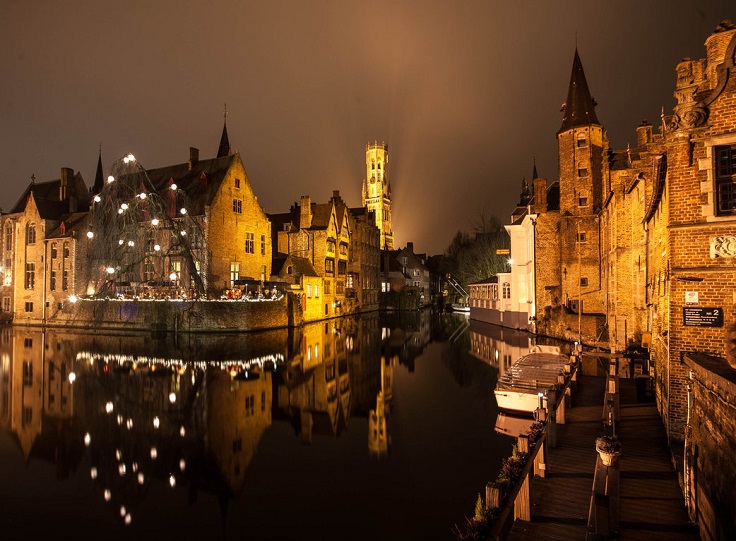
via voodoomania.deviantart.com
The historic center of Bruges is UNESCO World Heritage Site since 2000. This Belgian town is an example of human culture and history through the years. By walking around the town you can witness the beauty of both Gothic and medieval architecture, canals, cobbled streets, all these make Bruges one of the most picturesque towns in whole Europe! Bruges is the birthplace of the Flemish primitives and where painters Jan van Eyck and Hans Memling were living. The town offers many things to be seen or experienced, such as the Bruges Beer Museum, the Begijnhof, a 13th-century beguinage, and what you really, really need to try besides the beer is definitely the chocolate!
3. Alhambra, Spain
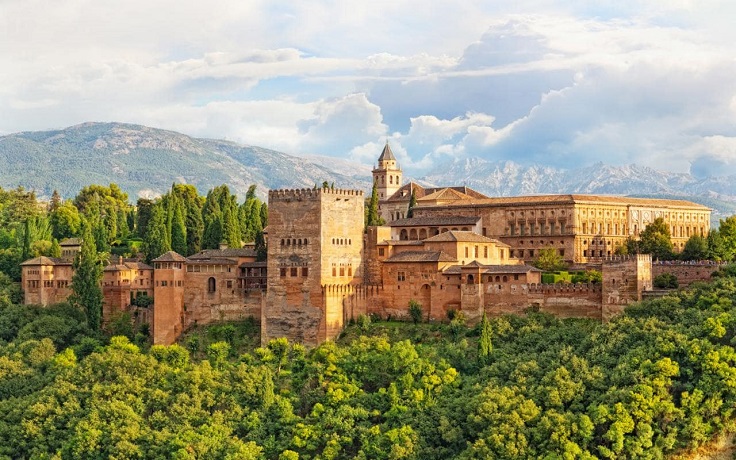
via telegraph.co.uk
Located in the Andalusian region of Spain, west of the city of Granada, you can find the Alhambra castle that got the name thanks to the reddish walls – in Arabic, qa’lat al-Hamra’ means red castle. The castle was first constructed over Roman ruins as a small building in 889, but in 1333 it was made into a big castle by the orders of Yusuf I, Sultan of Granada. Over the years, the castle was neglected until it was rediscovered by European scholars and travelers in the 19th century when the restoration of the castle began. The Alhambra is now one of the most popular tourist attractions in Spain. Because of the history and gorgeous architecture it is, the castle is recognized as UNESCO World Heritage Site in 1984.
4. Carcassonne, France
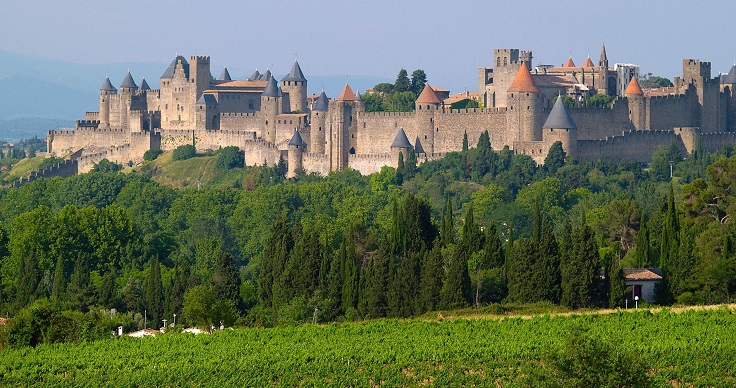
via reddit.com
The medieval city of Carcassonne is located in the region of Occitania, in the south of France. The city has 52 towers and a wall long three kilometers that used to protect the city centuries ago. Thanks to the rich history and unique look, the castle is recognized as UNESCO World Heritage Site in 1997. It is the most visited monument in France, having only one competitor – Mont Saint Michel. However, the fortified city of Carcassonne isn’t just a tourist attraction; there are people living inside the walls! For everyone who would like to experience what it’s like to live in a real medieval castle, you can book accommodation online.
5. Rhine Valley, Germany
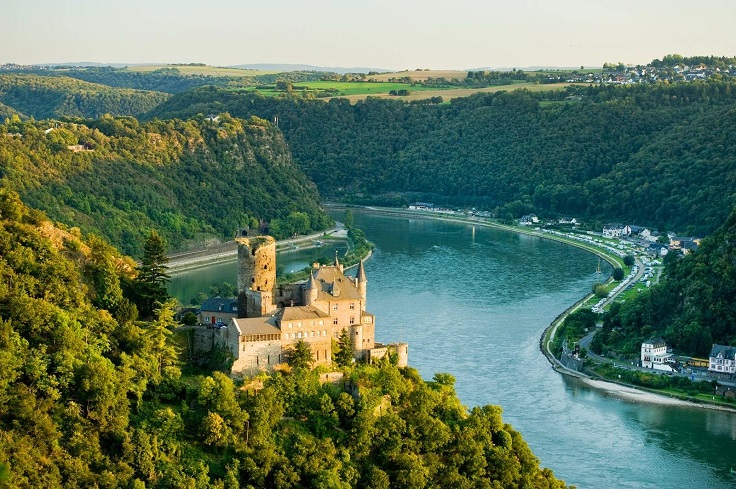
via wineontherhine.blogspot.com
The Rhine is not only one of the biggest rivers in Germany, but it is also a very important waterway. It stretches through many historical attractions, such as castles, old towns, and vineyards, all being surrounded by forests, making the Rhine Valley one of the most beautiful attractions in the whole country. You can visit the old towns of Mannheim and Worms along the river Rhine, known for their medieval architecture. You can enjoy the spa town of Wiesbaden or surround yourself with the beauty of the Palatinate Forest. Right in the Rhine Valley center, there is the charming old town of Braubach and the Marksburg Castle – something you’ve got to see! The Valley is a UNESCO World Heritage Site since 2002.
6. Giant’s Causeway, Northern Ireland
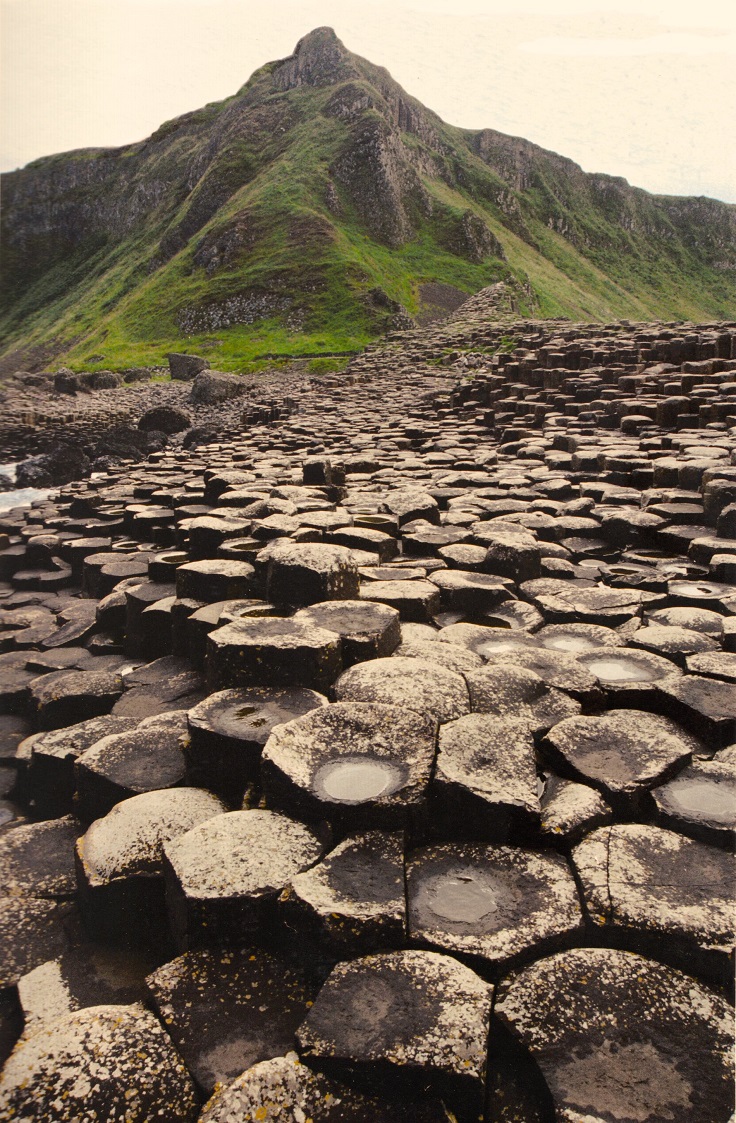
The Giant’s Causeway is a unique rock formation that you won’t find anywhere else, but just in Northern Ireland. It is located in the county of Antrim, on the northeast coast of Northern Ireland. The rock formation counts 40,000 interlocking basalt columns that form stepping stones, some as high as 39 feet, and they all slope down to the sea. According to a legend, a giant named Finn McCool built the Giant’s Causeway, and that’s the reason why one of the rock formations there resembles a giant’s boot. Scientifically – the formations were formed by intense volcanic activity that happened 50 million years ago. The Giant’s Causeway is voted as the UK’s fourth best natural wonder, and it is a UNESCO World Heritage Site since 1986.
7. Norwegian Fjords
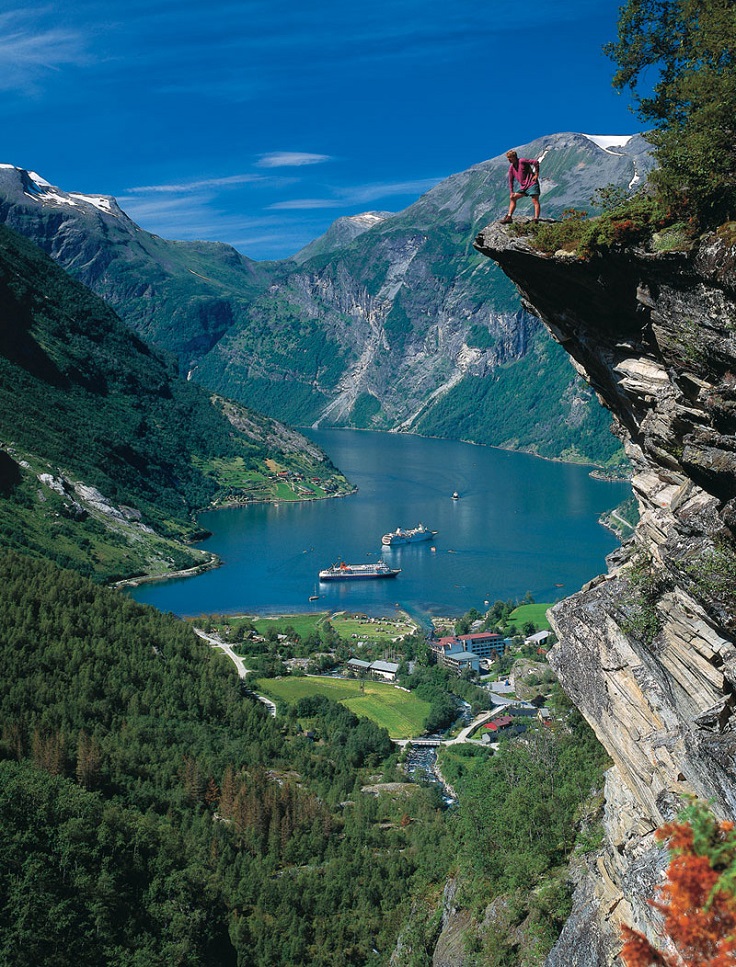
via paradoxoff.com
The Norwegian fjords have a lot to offer, and every nature lover is recommended to visit them at least once in their lifetime – once you get there, you’ll understand what we’re talking about! Norway has the third-longest fjord in the world, known as Sognefjord, and it is the deepest and the longest in the country. While having a cruise, you can witness the beauty of few UNESCO World Heritage Sites – Geirangerfjord, best known for Dalsnibba, where you can see waterfalls, mountains, and forests; Lysefjord is best known for Hengjanefossen Waterfall and the famous Preikestolen, which means Pulpit Rock; and Nærøyfjordis which is the narrowest fjord in the world.
8. Verona, Italy
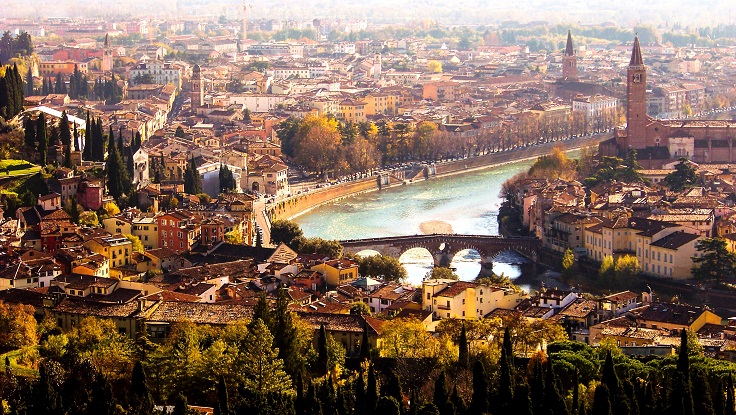
via urbanette.com
Many of you have already heard about Verona – it is the charming Italian town where Romeo and Juliet used to live! Shakespeare was actually inspired by how the noble families tore the town apart. As most of the Italian cities, Verona has that typical, never-ending charm of a Mediterranean town with plenty of history behind it. The town has both the Mediterranean and medieval architecture. They offer so many amazing things to see, with one of them being exactly Casa di Julietta, where the famous balcony of the Shakespearean story. It was declared a UNESCO World Heritage Site in 2000.
9. Cesky Krumlov
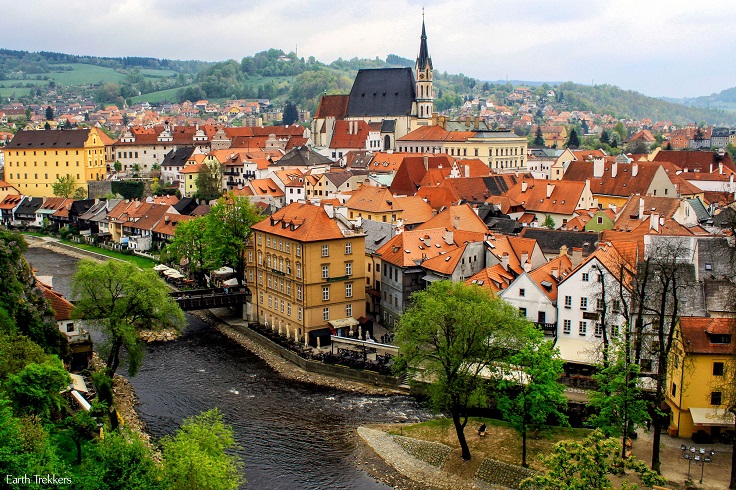
Cesky Krumlov is a town located on the banks of river Vltava in the Czech Republic. Its historic center is declared a UNESCO World Heritage Site since 1992. Besides the charming architecture, the two main touristic attractions in the town are the gothic Church of St.Vitus and the 13th-century castle around which the town is built. The town has a rich history that includes even royal families living here. Cesky Krumlov is an excellent choice if you want to experience the European culture from a less – crowded perspective.
10. Thingvellir National Park, Iceland
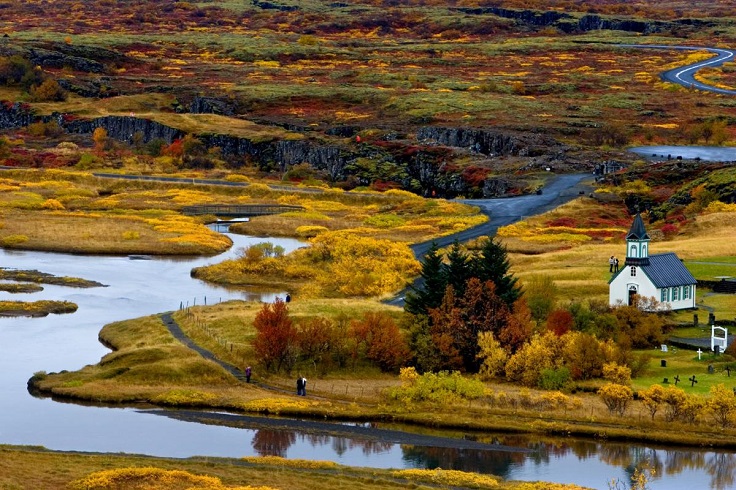
The Thingvellir (Þingvellir) National Park is considered to be the national shrine of Iceland for the same reason that is recognized as UNESCO World Heritage Site in 1972 – it is the place where the first oldest, existing parliament in the whole world first assembled in 930 AD and continued until 1798! The park is located almost 50 km away from the country’s capital Reykjavik and offers historic values and many natural features worth to be seen. Thingvellir National Park is one of the most popular tourist destinations in Iceland, with thousands of tourists each year coming to witness its beauty.

